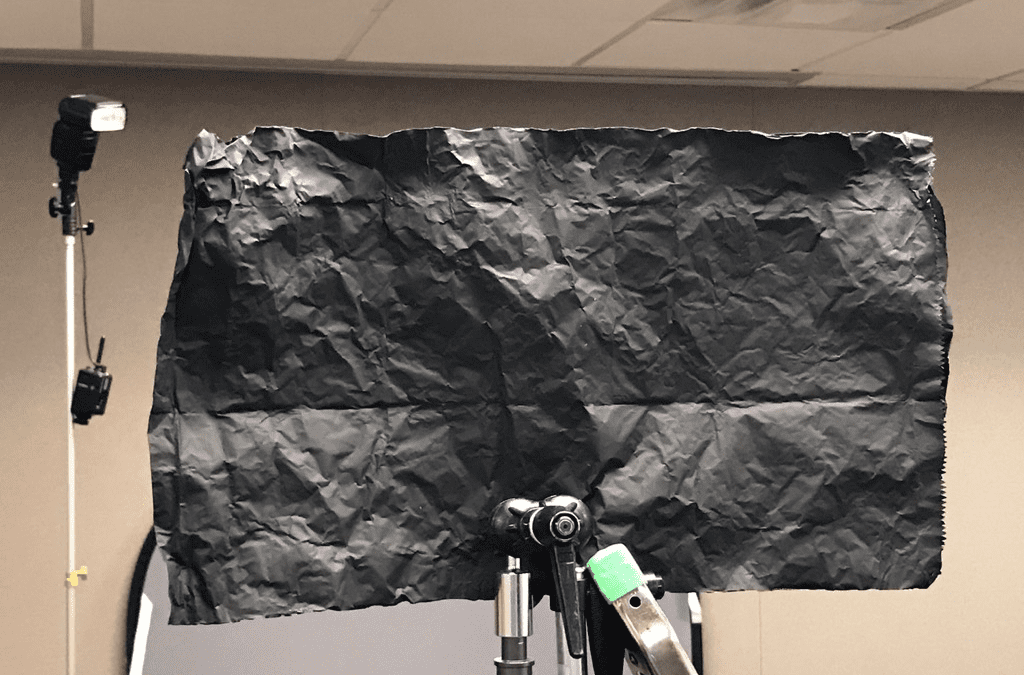Cinefoil is an incredibly important part of any studio. It has been around since the 1920’s and was used predominantly in motion picture studios. Cinefoil continues to be used today in the modern movie set but the product has also proven to be very useful in the photography studio.
Cinefoil is known by a few names but mostly, it is referred to as either Cinefoil, or Black Wrap. For the rest of this article, I will just refer to it as Cinefoil. If you would like to learn more about this product, check out this article and video.
The main function of Cinefoil is to control light. Cinefoil is made up of a thin aluminum sheet that is black on both sides. It is very similar to the aluminum foil that you use in a kitchen on thicker and black.
You can move and bend the product into any required shape in order to block light and direct it to a specific location. It can be used as a flag to block light, and it can be cut into shapes that are placed in front of the light to project specific types of light shapes.
The great thing about Cinefoil is that it is fully re-usable. I am still using the very first roll I bought years ago. After I tear a sheet to use on set, I fold it back and it is ready to be used again and again. A roll of Cinefoil will set you back around $45 which may sound pricey but it is something that is going to pay for itself very quickly and will last you a long time.
A while back I wrote an article about all the different types of uses for Cinefoil which you can find HERE. But what if you find yourself on set and (for whatever reason) you don’t have any Cinfoil? Is there an alternative that you can use instead that will do the same or, similar job?
In certain cases, you might be able to use regular tin foil from the kitchen.

The one thing that you will need to keep in mind is that regular kitchen foil is reflective and so you will need to be careful that you are not redirecting the light somewhere unwanted. If you are going to use regular kitchen foil, always use the dull side of the foil. You will notice that kitchen foil has a side that is slightly less reflective. This is the side you will want to use as it will bounce less light. In the past, I have used kitchen foil to make snoots, flags, and even to block out whole windows. In some cases, it is more economical to use kitchen foil than a whole roll of Cinefoil as long as you can make it work.
One of the most common ways to use Cinefoil is for shaping light by creating a snoot. A snoot is a cone-shaped attachment that is placed on the front of the light to focus it on a specific area. If you are trying to shape light in this way, another Cinefoil alternative would be barn doors. Barn doors are an inexpensive accessory that is attached to the front of a studio light which has four doors that open up and close to allow you to block out light in a specific area.

Barn doors allow you to shape the light in either a rectangle or square format. This is a common use for Cinefoil which can also be achieved with Barn doors.
In some cases, when using low-power LED lights, you can even use cardboard in place of Cinefoil. This needs extra care as you need to ensure that the lights are low-power LED lights that do not burn hot.
Cardboard should never be used on hot lights or strobes as the power they emit will result in the cardboard catching on fire. The same applies for plastics.
Essentially, you want to avoid using any kind of material that can catch on fire unless you are using low power LED light that run cold.

